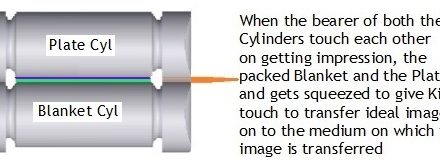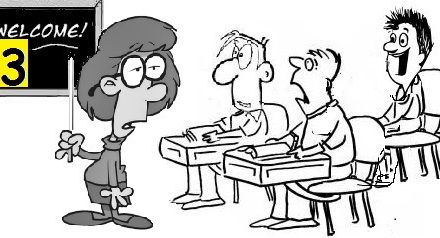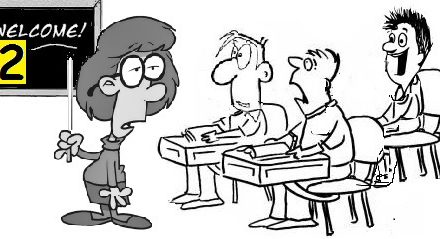
Guide to printing students- 8

Guide to printing students
-Few objective Questions and answers-
Written by : N.R. Jayaraman

Pre note:-
The articles are meant to help the students gain knowledge and effectively compete in the interviews and nothing else. Please note that these are not to be published by anyone for commercial purpose without the written permission from the author since the theme and illustrative examples have been compiled exclusively by the author for the benefit of the student community. THIS WILL BE PERIODICALLY PUBLISHED.

44) Two major divisions of printing processes exist, What are they ?
- The printing is divided into two groups. They are Security printing and Non Security printing.
- Printing the images without carrying overt and covert features in design element which are anti copying in nature is called Non Security printing and printing the images incorporating several kinds of overt and hidden covert features which are anti copying in nature is called Security printing.
- Printing text books, magazines, news papers, leaflets, pamphlets, posters, certain labels, coupons, advertisements, catalogues, stickers etc are covered broadly under Non Security printing.
- The Security printing covers printing of Bank Notes, Currencies, Stamps, Stamp papers, Brand protection Labels and cartons, various money Coupons, Licenses, Passports etc
45) What is Money? How did it emerge ?
Money is a medium of payment consisting of metallic coins, paper money and withdrawal documents. A Banknote or Currency is a type of negotiable instrument or a promissory note and form part of money. The birth and growth of money in the form of Paper Currencies and Bank Notes stemmed millenniums ago from the primitive barter, a system through which goods in need were exchanged for other goods since no payment system in the form of money was in vague anywhere in the world.
46) What is the difference between Currencies and Bank Notes?
- There is no difference between a Currency and Bank Note except that they are issued by two different agencies independent of each other. Both guarantee the values as indicated on those instruments while they are exchanged for some consideration.
- A Banknote is often known as a bill or paper money and issued by the Central Bank or Treasury on behalf of the legally elected Government of a country or state.
- Each and every Bank under the Central Bank cannot issue the Bank Notes as they are not authorized to do so. Only the Central Bank which organizes the printing of Bank Notes arrange for the circulation of the money through the agency banks working under them.
- Bank Note is a kind of negotiable instrument such as a promissory note and the value indicated on them is payable to the bearer on demand as assured by the bank as it has been issued by it on behalf of the Govt of the state.
- The Bank Notes contain the signature of the head of the Central Bank called Governor of the Bank in many countries.
- On the other hand the Currency note is also another form of the paper money issued along with the metallic coins called money.
- The Currencies are issued by the Government themselves guaranteeing the value indicated on them. It carries the signature of the Finance Secretary of the State. But the same Currency along with metallic money called coins are also not directly circulated by the Government but are transacted only through the Central Bank and their agency banks.
- Therefore a Country can have both Currency note and Bank Notes besides coin.
47) Who invented the Bank Notes and Currencies ?
The Chinese jiazi banknotes are generally considered to be the first paper money in history, entering in use around about 960 AD. The first European banknotes were issued in Sweden in 1660.
48) What types of common machineries and equipments are used for the production of security printing documents including Currencies ?
Some of the common machineries and equipments available for security printing include the following:
- Dry Offset : To print base tint design elements on both sides of the paper. The Dry Offset machine also is supplied in the form of perfecting machines to print the design elements simultaneously on both sides of the paper in one pass.
- Intaglio: To print relief images on the paper
- Cut pack: To process the numbered sheets into bundle of 100 notes by automatic process
- Super Numerota : To print serial numbers on the printed notes in sheets
- Nota sort : To automatically sort out the good and bad notes after the printed sheets are cut into note size
- Nota Numbering : To automatically number the single good notes sorted by the nota sort machine
- Random Numbering: To automatically number the serial nos of the defective notes which were fed into the memory so that they can be removed and processed to replace the defective notes in a bundle.
- Guillotine : Manual processing to cut the numbered sheets into bundle of notes
- Colourtronics : To online check the shades printed and to correct the ink feed on the machine
- Sheet inspection machines : Automatic checking of the printed sheets for defects. This replaces the manual checking for the said cause
- Nota save : Automatic online checking of the printed sheets for printing defects. This helps the operator to quickly correct the defects in printing.
- Computer to Intaglio plate: Engraved polymer plates to make Intaglio printing plates. This replaces more than 75% process done manually thus saving time and giving perfectness.
- Track and trace : A machine system fitted on all the machines with whose memory of the printed sheets, the missing sheets can be traced to exact point and also give exact figures of printing in each process thereby updating the accounting of printed, blank and defective sheets.
to be continued……………9
















Recent Comments